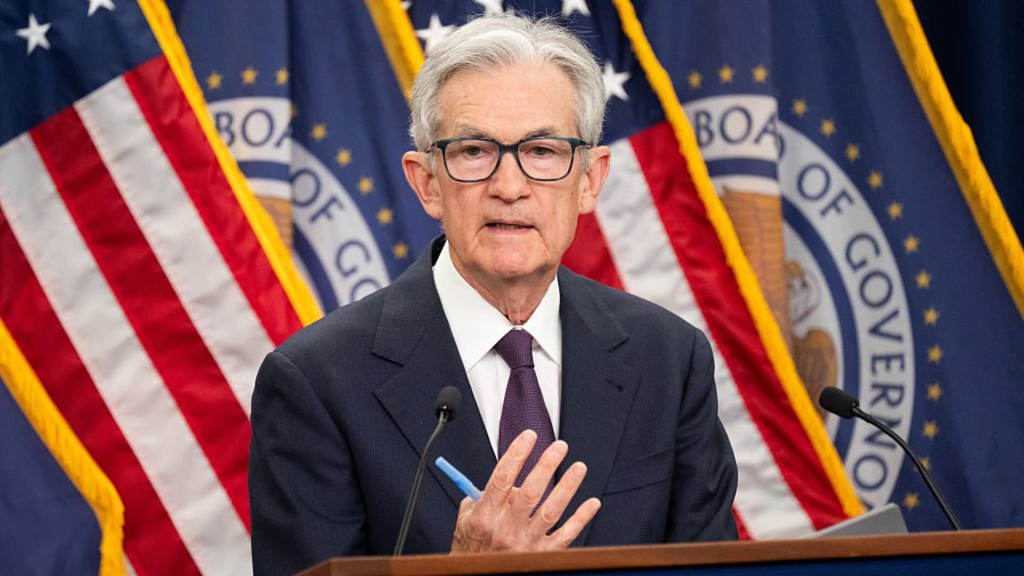Jerome Powell, the Chair of the Federal Reserve, reaffirmed the central bank’s focus on managing inflation during remarks made on Tuesday, stressing that interest rates will remain unchanged until they can better assess the effects tariffs might have on prices.
In his upcoming addresses to two congressional committees, Powell described the current economic landscape as robust, highlighting that the labor market is nearing full employment.
Despite this positive outlook, Powell acknowledged that inflation persists above the Fed’s target of 2%, with the consequences of President Donald Trump’s tariffs still uncertain.
“As policy changes continue to evolve, their impact on the economy remains ambiguous,” Powell stated. “The consequences of tariffs will largely depend on their final levels.”
Powell reiterated that officials are “well positioned to wait for more clarity regarding the economy’s trajectory before making any policy adjustments.”
This cautious statement may heighten tensions with Trump, who has intensified his criticism of Powell in recent weeks. In a recent post on Truth Social, Trump expressed a desire for Congress to address what he described as Powell’s “dumb, hardheaded” approach.
Powell’s comments, along with the Fed’s monetary policy report, are scheduled to be presented first to the House Financial Services Committee on Tuesday morning, followed by the Senate Banking Committee the next day.
Inflation expected to rise
The majority of Powell’s speech contained familiar language regarding the economy, which he characterized as “solid,” also describing the labor market in similar terms.
Nevertheless, he indicated that the Fed’s preferred inflation measure is projected to rise to 2.3% in May, while the core measure, excluding food and energy, is expected to reach 2.6%. In comparison, the readings for April were 2.1% and 2.5%, respectively.
Historically, tariffs tend to cause immediate price hikes but rarely lead to sustained inflationary trends. Powell and his colleagues on the Federal Open Market Committee (FOMC) are weighing these factors carefully and have no immediate plans to revise policy until more information is available on the current tariffs’ impacts.
“The FOMC’s duty is to keep long-term inflation expectations stable and to prevent a temporary spike in prices from escalating into an ongoing inflation issue,” Powell emphasized. He underscored the Fed’s aim to balance both full employment and low inflation, stating that consistent price stability is essential for long-term labor market health benefiting all Americans.
Recently, the FOMC unanimously agreed to maintain steady interest rates.
However, an analysis of members’ future rate expectations—illustrated through the “dot plot” grid—revealed mixed sentiments. While nine of the 19 officials supported either maintaining rates or implementing one cut this year, eight preferred two reductions, and two anticipated three cuts. The dot plot’s anonymity prevents insight into individual members’ perspectives.
In recent remarks, two influential FOMC decision-makers, governors Michelle Bowman and Christopher Waller, indicated their support for a potential reduction in July, contingent on inflation data remaining stable. The consumer price index reflected only a 0.1% increase in May, indicating limited pricing pressures attributed to tariffs thus far.
Market futures suggest a 23% likelihood of a rate cut during the upcoming July 29-30 meeting, with a greater probability for the next reduction anticipated in September, according to the CME Group’s FedWatch tool.


























